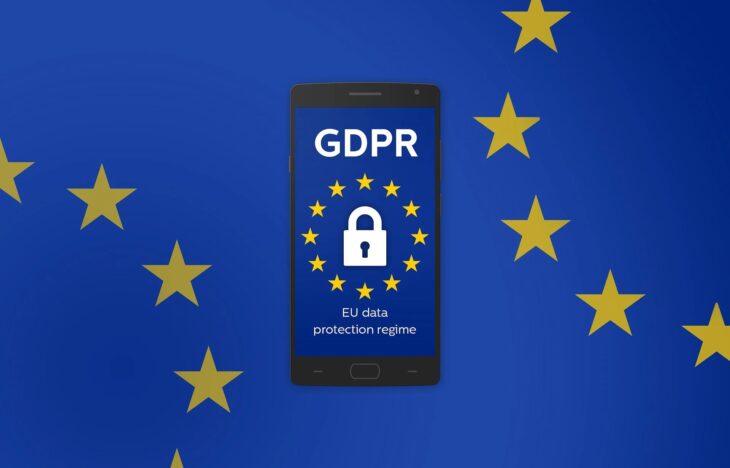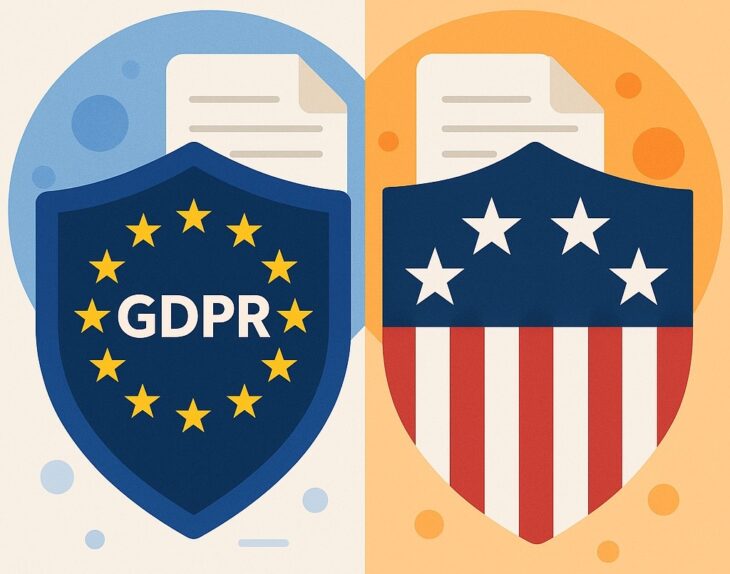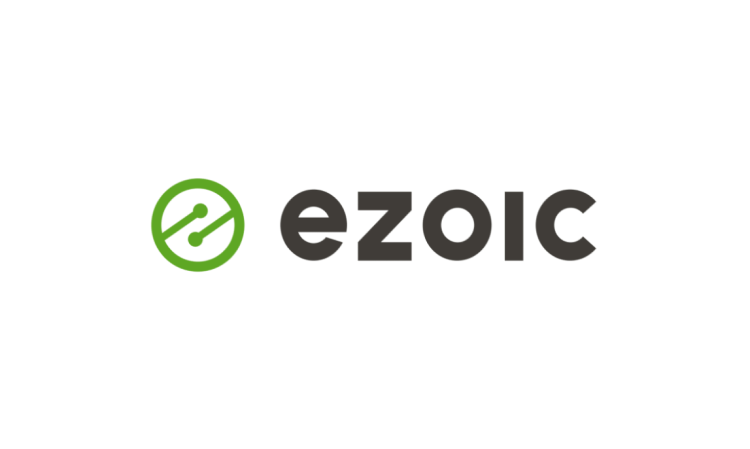Enacted in 2018, the General Data Protection Regulation (GDPR) reshaped how organizations manage data related to individuals in the European Union.
With strict requirements on consent, data handling, and individual rights, GDPR quickly became a gold standard globally. In contrast, the United States has adopted a fragmented approach with sector-specific and state-level laws.
Businesses operating internationally must grasp these differences to ensure full compliance and avoid serious penalties.
Table of Contents
ToggleLegal Framework and Scope
Navigating data privacy requires familiarity with how laws are structured across different jurisdictions.
Regulatory environments in the European Union and the United States follow sharply contrasting paths.
One uses a centralized and rights-based model, while the other is a fragmented, sector-driven system.
EU GDPR

GDPR serves as a unified legal framework adopted by all EU member states. Designed to protect the personal info of individuals within the European Union, it applies to any entity that processes such data, regardless of physical location.
Personal info is defined broadly, covering anything that can identify an individual directly or indirectly. Obligations apply to both controllers (who determine how data is used) and data processors (who handle data on behalf of controllers).
Regulatory oversight is managed by national Data Protection Authorities (DPAs), with coordination at the EU level through mechanisms like the European Data Protection Board (EDPB).
Key characteristics of GDPR:
- Single legal framework across all EU member states
- Applies to organizations outside the EU that process EU residents’ data
- Extra-territorial scope broadens compliance obligations worldwide
- Personal info includes names, email addresses, IP addresses, biometrics, and more
- Obligations for both controllers and processors
- Strong coordination among EU protection authorities
Regulatory consistency across the union enables clearer compliance expectations and centralized enforcement processes.
Organizations are expected to map data flows, implement technical safeguards, and document all processing activities to remain compliant.
US Data Privacy Laws

Privacy laws in the United States are defined by a patchwork of federal and state statutes. No single law covers all types or all individuals. Instead, regulations apply depending on industry sectors or specific types of personal info.
Several major laws offer targeted protections, including:
- HIPAA (Health Insurance Portability and Accountability Act) for health data
- GLBA (Gramm-Leach-Bliley Act) for financial information
- FERPA (Family Educational Rights and Privacy Act) for educational records
At the state level, privacy regulations vary significantly. California has led reform efforts with the California Consumer Privacy Act (CCPA) and its expanded version, California Privacy Rights Act (CPRA).
Other states like Virginia and Colorado have also introduced privacy laws such as VCDPA and CPA, respectively.
Compliance complexity increases with each additional state law. A business may need to maintain different privacy notices, opt-out mechanisms, and vendor agreements for each region.
Legal exposure is tied to where consumers reside and how companies collect, use, or share their data.
Online platforms such as uusimmatkasinot.com, which aggregate and review new online casinos for European players, especially Finnish users, must carefully navigate GDPR compliance.
Key Principles and Philosophies
Before diving into consent mechanics and consumer rights, it’s necessary to grasp the foundational philosophies that drive privacy in the EU and the U.S.
These philosophies shape how laws are written, enforced, and interpreted. GDPR builds upon the idea of privacy as a fundamental right, whereas U.S. privacy laws largely focus on consumer protection and economic efficiency.
GDPR
Legal foundation of GDPR draws authority from the EU Charter of Fundamental Rights, where privacy is embedded as an essential right of every individual.
Regulation treats personal info not as a commodity, but as a dimension of human dignity and autonomy.
Companies are not just encouraged but legally obligated to handle data in ways that preserve that dignity.
Seven central principles define the GDPR’s framework:
- Lawfulness, Fairness, and Transparency: All processing must have a lawful basis, be fair to the individual, and be clearly communicated.
- Purpose Limitation: Data must only be collected for specific, explicit purposes.
- Data Minimization: Only what’s necessary for the stated purpose may be collected.
- Accuracy: Personal info must remain current and correct.
- Storage Limitation: Data should be retained only for as long as necessary.
- Integrity and Confidentiality: Appropriate security measures must protect the data.
- Accountability: Organizations must prove compliance with all these principles.
Consent under this system is not a checkbox formality. It must be active, informed, and specific. Individuals should know exactly why their data is collected and how it will be used. Any change in use demands fresh approval.
Transparency and accountability are not optional—they are integral. Every system and data-related decision must be documented, reviewed, and justifiable under GDPR criteria.
US Model

Approach in the U.S. is shaped more by commercial practice and regulatory pragmatism than by declarations of fundamental rights. Privacy is often treated as a trade-off between innovation and risk.
Data serves as both a commodity and a business asset, with restrictions tailored to minimize regulatory burden.
General themes that reflect this model include:
- Consumer-Centric Disclosure: Laws require companies to disclose practices rather than ban them.
- Opt-Out Mechanism: Most laws permit data use by default unless the consumer actively opts out.
- Market Flexibility: Regulations aim to encourage technological advancement and market participation.
- Sector-Specific Focus: Rules apply differently based on industry (healthcare, finance, education, etc.).
Instead of universal principles like GDPR, U.S. regulations are piecemeal and reactive.
Consumer protections exist but are shaped heavily by business considerations and political feasibility.
Personal info is widely collected and monetized unless a state law intervenes with specific restrictions.
Consent and Consumer Rights

Consent and consumer rights form the practical arm of any data privacy regime. These elements dictate how much control individuals retain over their own information.
GDPR offers a far more comprehensive and rights-heavy system, while U.S. laws provide selective protections depending on geography and industry.
GDPR
Consent under GDPR requires meaningful user action. Silence, inactivity, or default options are not considered valid. Organizations must prove that consent was obtained lawfully, and withdrawal must be just as accessible as opt-in.
Consumers are granted broad rights, which must be respected without delay or unreasonable hurdles. These include:
- Right of Access: Individuals can request a copy of all personal info held about them.
- Right to Rectification: Errors in personal info must be corrected promptly.
- Right to Erasure: Also known as the “right to be forgotten,” individuals can demand deletion under certain conditions.
- Right to Data Portability: It must be provided in a machine-readable format for use with other services.
- Right to Object: Individuals can object to processing, particularly in marketing or profiling contexts.
- Right to Restrict Processing: Consumers can request temporary suspension of data use in specific situations.
Organizations involved in high-risk data activities must appoint a Data Protection Officer (DPO).
DPOs oversee privacy practices, conduct impact assessments, and liaise with regulators. Even when not mandatory, appointing a DPO is often viewed as a responsible choice.
Privacy policies must outline these rights clearly, with instructions for how users can exercise them. Organizations failing to provide such clarity risk regulatory scrutiny and reputational damage.
US Laws
Consumer rights in the U.S. vary by law and jurisdiction. California leads with its CCPA and CPRA laws, providing some of the strongest state-level protections. However, rights are generally more limited, and enforcement mechanisms differ.
Key rights under CCPA/CPRA include:
- Right to Know: Individuals can ask what data is being collected, used, and shared.
- Right to Delete: Consumers may request deletion of personal info collected.
- Right to Opt-Out: Users can prevent the sale of personal information to third parties.
- Right to Non-Discrimination: Businesses cannot penalize consumers for exercising privacy rights.
CPRA introduced a new category known as Sensitive Personal Information, which includes data like:
- Precise geolocation
- Biometric data
- Racial or ethnic origin
- Financial account credentials
- Health-related information
Consumers have the right to limit use of this sensitive information.
DPOs are not required under U.S. law. Most companies manage privacy internally or contract external consultants.
Consumer rights are usually exercised through:
- Privacy preference centers
- Do-not-sell-my-data links
- Customer service request forms
Laws often focus on transparency and opt-out functionality rather than placing default restrictions on data use.
Protection levels depend on individual state legislation or federal laws tied to specific industries.
Enforcement and Penalties

GDPR enforcement operates through national Data Protection Authorities, which coordinate across the EU. These bodies have investigative powers, can impose corrective actions, and levy fines.
Penalties can reach €20 million or 4% of global annual turnover—whichever is greater. Enforcement is consistent, well-documented, and taken seriously by European regulators.
Authorities can audit organizations, ban data processing, or require immediate changes to operations. In major cases, cross-border cooperation among DPAs ensures unified action. High-profile investigations often result in fines for companies failing to meet basic privacy obligations or mishandling user data.
In contrast, U.S. enforcement is decentralized. State Attorneys General, such as those in California and Virginia, oversee compliance. Fines vary and are generally less severe than GDPR’s upper thresholds. Federal agencies like the FTC may intervene in egregious cases, but enforcement largely remains reactive.
Private rights of action are limited. Under the CCPA, individuals can sue only for data breaches involving certain types of personal info.
No equivalent right exists for general misuse of personal information. Compliance is often driven by reputational risk rather than the threat of legal action.
Summary
EU GDPR represents a unified, rights-based approach to data privacy, with strict requirements, broad consumer rights, and aggressive enforcement mechanisms.
U.S. data laws remain fragmented, sector-specific, and business-friendly, offering a more reactive and less uniform model.
Global businesses face a complex challenge in aligning practices with both frameworks.
Complying with GDPR alone does not guarantee compliance within U.S. jurisdictions, and vice versa. A patchwork of regulations requires adaptable systems, proactive data governance, and legal foresight.


